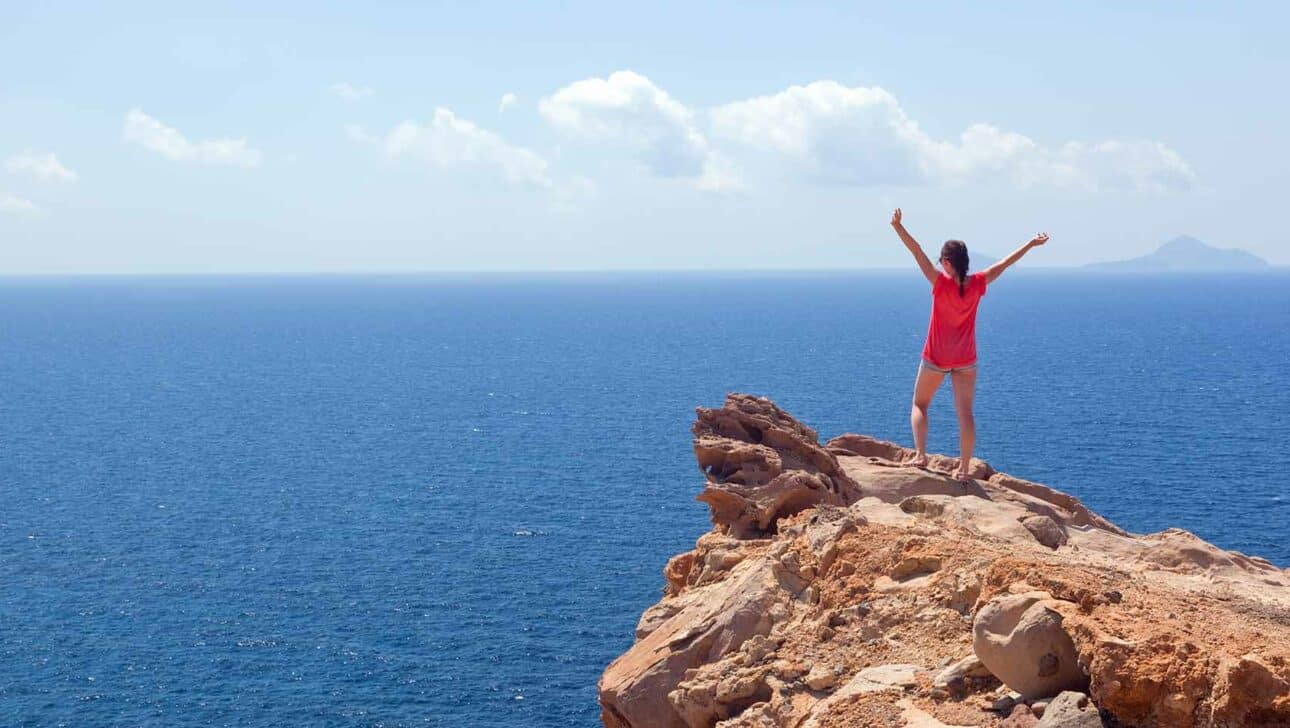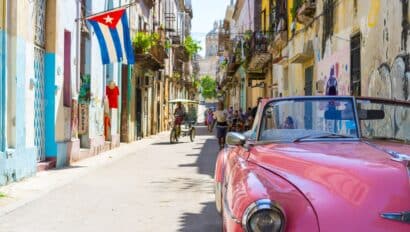Blue Sea and Ancient Ruins Inspire and Charm
We could easily pause for more than a week to admire the sapphire Aegean Sea and pristine beaches on the gorgeous island of Crete. It’s worth the effort to tear oneself away from this picture-perfect experience to explore the many other attractions on this historically and environmentally captivating island. Rolling olive groves, vineyards, and orchards, rocky cliffs, colorful harbors, and winding walking paths all wait to be discovered.
In addition to stunning scenery, Crete contains the most ancient of ancient architecture, created by Europe’s first urban culture. Located in the coastal prefecture of Rethymnon, the archaeological site of Eleutherna contains the remnants of what was once a thriving community—about three millenniums ago. Scientists estimate that people lived in the hillside city as early as 970 B.C. It thrived during the Roman and Early Byzantine Age, its inhabitants occupied with trade, agriculture, and shipping. A wall enclosed the city—parts of which survive today—and a tower protected the sole entrance. Eleutherna also contained a temple, a sanctuary, and a Roman bathhouse.
Eleutherna had such a rivalry with Knossos that the two cities battled in 222 B.C. Apparently, Eleutherna faced a pretty powerful competitor.
Knossos, the grand capital of Minoan Crete, is home to the most flamboyant, complex, and colossal palace known. According to Greek mythology, it’s also the setting for the Minotaur (half man, half bull). Legend has it that the Minotaur was imprisoned in a labyrinth underneath the king’s palace before Theseus killed him.
Knossos saw its first settlers way back in 7000 B.C. but the palace wasn’t built until around 1700 B.C. Once excavation started in 1878, and continued from 1900 to 1930, we finally got a glimpse of the immense palace’s courtyards, private apartments, baths, and colorful frescos, which date back to 1700 B.C.
Spanning about 150,000 square feet—the size of two football fields—The Palace of Knossos is a remarkable testament to the Minoan civilization. Mythology indicates that architect Dedalos designed the palace to be so vast and complex that anyone who entered would not be able to find his way out.
Unlocking Knossos
Fortunately, our local guides make sure that we safely exit Knossos when it’s time. Armed with intimate knowledge of the palace, our guides give a concise tour of the more than 1,300 rooms, paintings, and other elements of the palace. We arrive after lunch in Eleutherna and a visit to the town of Margarites, which ensures us a peaceful visit in the late afternoon sun.
In contrast to its former rival, we get to see Eleutherna in the cool morning light. We won’t have to discover Eleutherna on our own, however. A senior archaeologist gives us a private tour of the most recent excavations on the site. The digs are some of the most important archaeological finds of recent decades and not yet open to the public. But they are open to us!
This is just a taste of what’s in store when we tour the Greek Isles. The colorful villages, ancient ruins, and fresh cuisine, not to mention a friendly, family oriented community that welcomes visitors, will leave a deep impression.




